I am a firm believer in learning vocabulary if you want to speak another language with any fluency. However, it has the disadvantage of giving the impression that A always equals B. Which is not true of course.
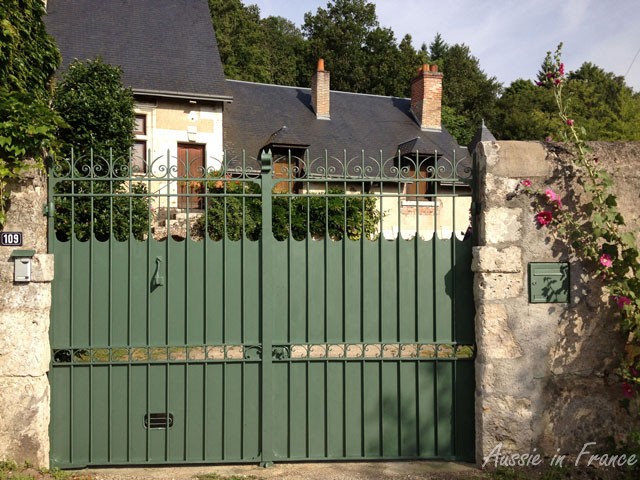
I still remember learning that gate = barrière = and fence = clôture and find it difficult not to automatically say “barrière” and “clôture” each time The problem is that they are not always equivalents !
Our house in Blois has a portail (which we repainted in a heat wave), which is used to designate a large metal or wooden gate. The bits on either side of our portail are murs or walls because they are made of stone. Our little house also has a portail but it’s wooden.
No barrières in sight! So I asked Jean Michel , “qu’est-ce que c’est qu’une barrière“. He thought about it and very helpfully said “Je ne sais pas”. So I’ll tell you what I think it is. As far as I can see, it refers to a barrier, such as the Great Barrier Reef in Australia (grande barrière de corail), a safety gate or a crowd barrier (une barrière de sécurité), a language barrier (barrière de la langue – now that’s useful!) and more important still, a level crossing gate (barrière de passage à niveau) – you may remember my close shave in Germany last summer.
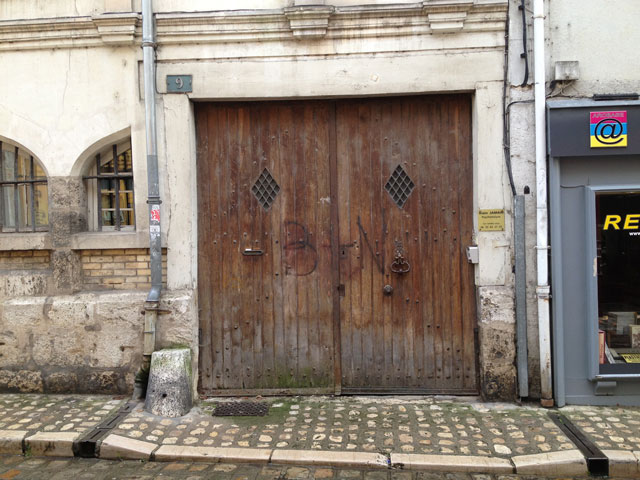
A gate can also be a porte, such as the town gates or gate to a castle or even a garden gate if it looks like a door. Those enormous gates that you see on the façade of many buildings in France originally designed to take a horse and carriage through are called portes cochère.
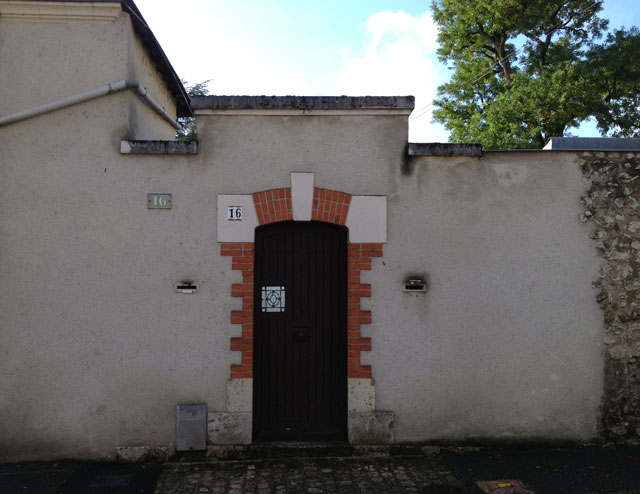
If it’s not enclosed on all sides by a wall and not big enough to let a vehicle through, it’s a portillon.
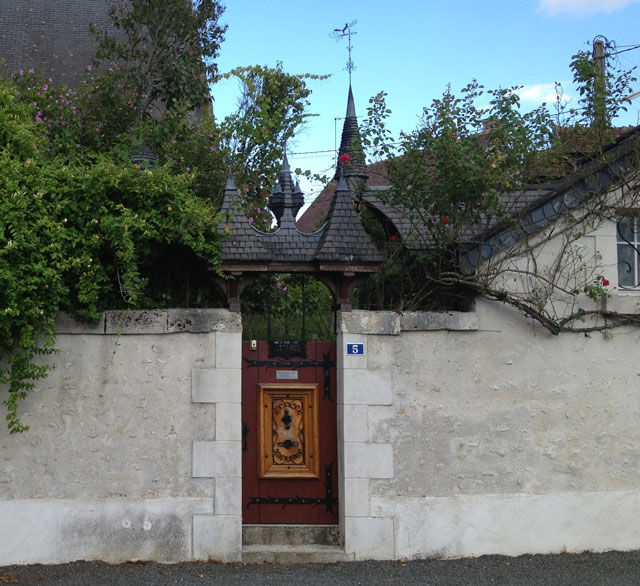
A large metal gate that doesn’t have any solid parts the way our green gate does is called a grille d’entrée.
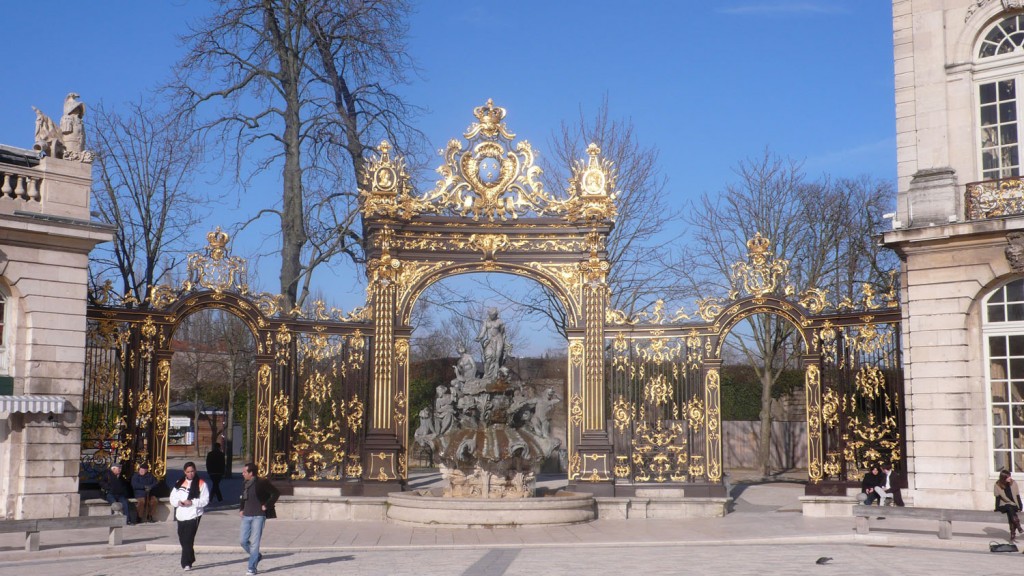
Fortunately, fence isn’t quite as complicated. Below, you can see a clôture which is definitely a fence, but the stone wall behind it is a mur d’enclos.
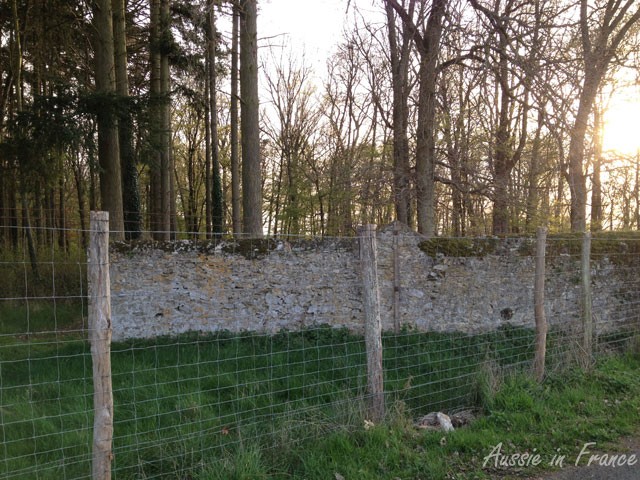
Theoretically, you can have a clôture en bois such as the one the neighbours used for their chicken yard below, but most people would call it a palissade. The wire fence next to it is a clotûre though.
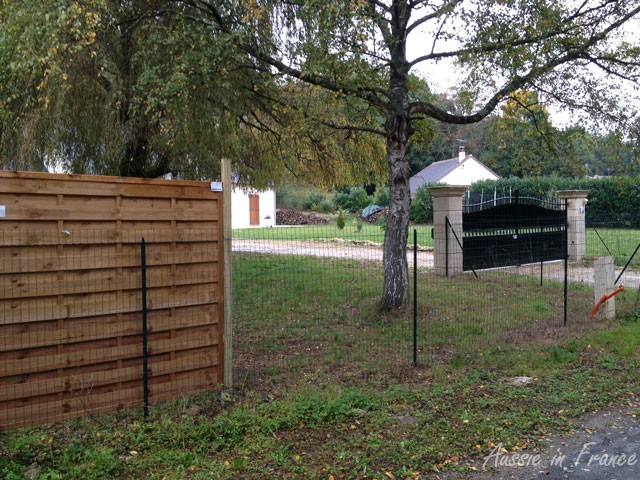
So next time you want to say “fence” or “gate”, I hope you’ll do better than me!

You offer up some lovely examples. I don’t think I’ve heard of the portillon term before.
Very good overview as ever. It made me think how different people’s background gives them each a different twist on the new language. For instance, I don’t struggle too much with the above distinctions and I quite like the way French is more specific for this sort of thing, but I can see how you would get certain words stuck if you were misled or mistaken for some reason early on — I just have a different set of words that catch me out. I must try and introduce some of the alternative expressions you suggest occasionally though.
The forest trails here are blocked by barrières ie wooden bars that slot into metal slings on posts to block the way when the foresters don’t want vehicles going down the trails. That association of barrière and bar might be a good mnemonic for anyone struggling to remember when to use the term.
You can also have a muraille, which is a big wall eg la Grande muraille de Chine.
The one I would like a neat definition of is clos, and I don’t think there is one. It is sort of the equivalent of walled garden, but not necessarily, and in the Touraine, pedants will tell you it refers specifically to walled parcels of vines, but it is used a bit more loosely than that in practice, and can refer to any relatively small rural enclosure, including places that might otherwise be termed cours (courtyards). Sometimes the clos in question no longer actually exists, but the memory of it is retained in a place name.
There is so much assumed knowledge within languages, and it is not easy to articulate all the subtle nuances that a native speaker ‘just knows’.
A clos according to the Larousse is cultivatd land surrounded by walls or hedges, near houses, and more particularly a vineyard. If there is a house, it’s called a closerie (like ours!). I think that would cover the different examples you give.
I didn’t think to mention muraille. Thank you. It’s a long, thick wall, usually of stone, such as the Great Wall of China, as you mentioned.
Cognitively speaking….it’s very efficient to see the image, and the word, and speak the word as you glance at the image….I think I’ve learned more vocab quite easily today!
And believe or not, I didn’t need to go out and take any of those photos. I had them all!
V. interesting, as usual. Not quite on the topic, but relating to addresses. Have always wondered what bis means when used as part of an address, eg 2 bis? Grateful for help.
Also when I see the word clos I always think of Monet’s Clos Normand, which I guess means an enclosed garden in the Normandy style?
Best wishes, Pamela
Bis (and you can even have ter) means that a house that initially only had one entry now has two or three. For example, in an old apartment building, there might have been the main entrance and the servants’ entrance at n° 2, but now different people live in the servants’ quarters so they have been given the number 2bis.
See my answer to Susan’s comment below for “Clos”.
Many thanks Rosemary – have been puzzled by this for a long time. So good to understand what it means – and so helpful when looking for an address. Have a good weekend, best wishes, Pamela